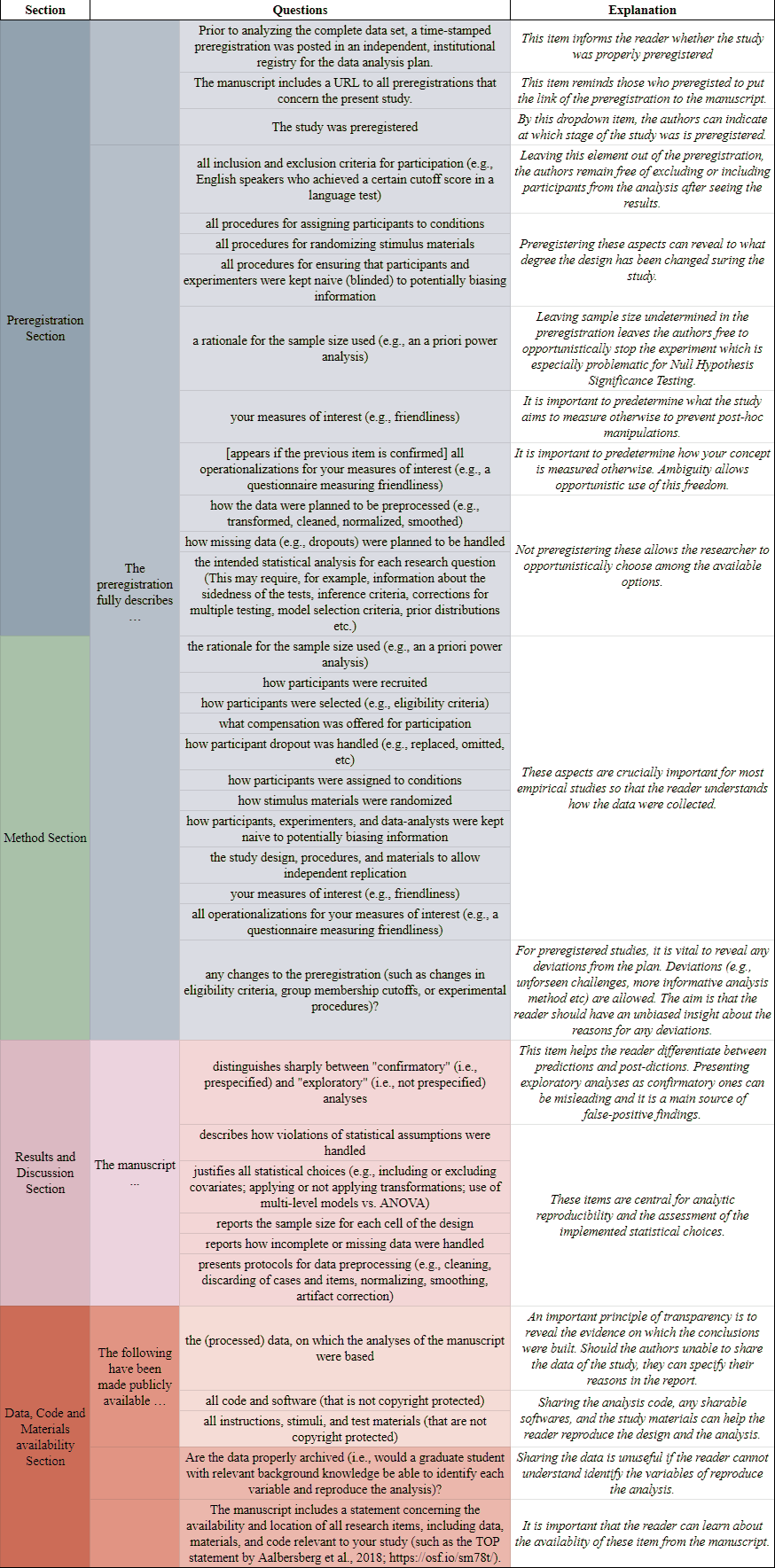Using the 'Transparency Checklist Guidelines' as an Educational tool
Teaching students the standards of transparency and credibility in research reports.
Transparency Checklist Guideline for Education
What is it for?
As an educational tool, the Checklist can be used to teach and improve the standards of transparency and credibility in research reports made by students. The aim is that students are embedded in transparent and open practices from the beginning of their training.
See here for an adapted version of the original checklist for educational purposes.

How to use it?
Supervisors and instructors can require students to create a Transparency Report along with any empirical research assignment.
Steps to follow
- Inform the students about the Transparency Checklist.
- Add the completion of the checklist to the requirements.
- Make the checklist app available to students
- Be ready to answer questions if the students are uncertain about a checklist item.
- Read the Transparency Report along with the manuscript.
Optional steps
- Explain each item why it is important for transparency.
- In the classroom, ask the students to evaluate some (weakly and strongly transparent) published research papers. This can help them get familiar with the checklist and realize the importance of transparent reporting.
How to evaluate the Transparency Report
- In the requirements, indicate which items should have a “yes” response. Should you want to make it easier for the students, you can require only the Short (12-item) Checklist: http://www.shinyapps.org/apps/ShortTransparencyChecklist/
- When possible, check whether the manuscript is in line with the checklist answers.
Reference
The following paper introduces the Transparency Checklist and describes how an initial set of items was iteratively evaluated by 45 journal editors, as well as 18 open-science advocates until a consensus was reached about the content and form of the checklist.
Aczel, B., Szaszi, B., Sarafoglou, A. et al. A consensus-based transparency checklist. Nat Hum Behav 4, 4–6 (2020). https://www.nature.com/articles/s41562-019-0772-6